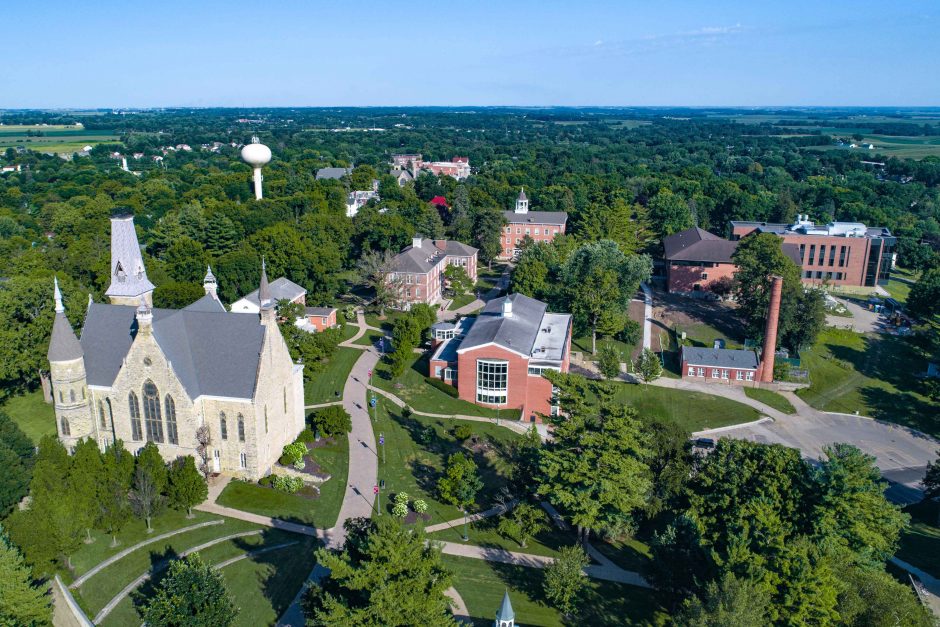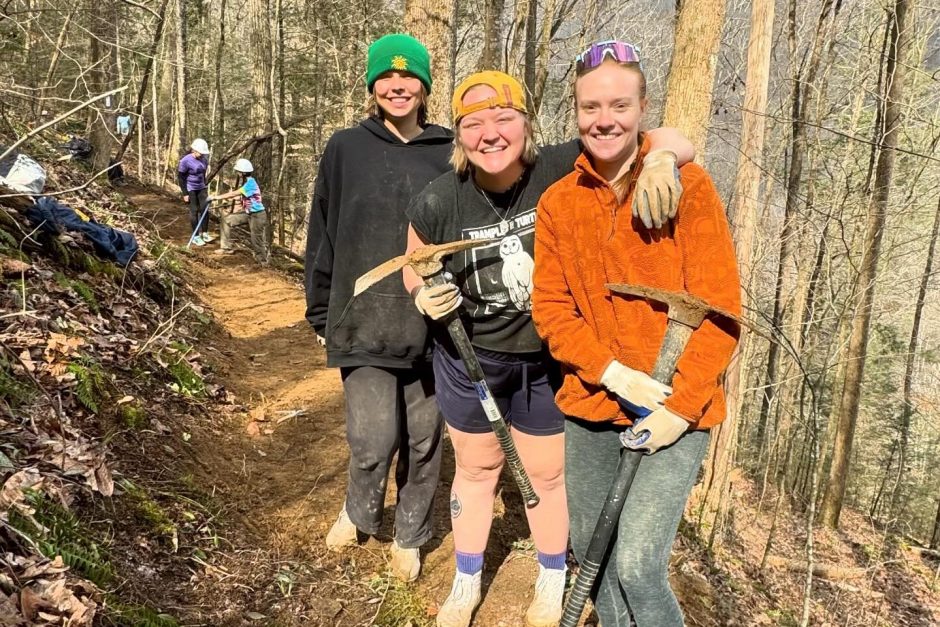Junior dives deep into Alaska’s fisheries and wildlife biology
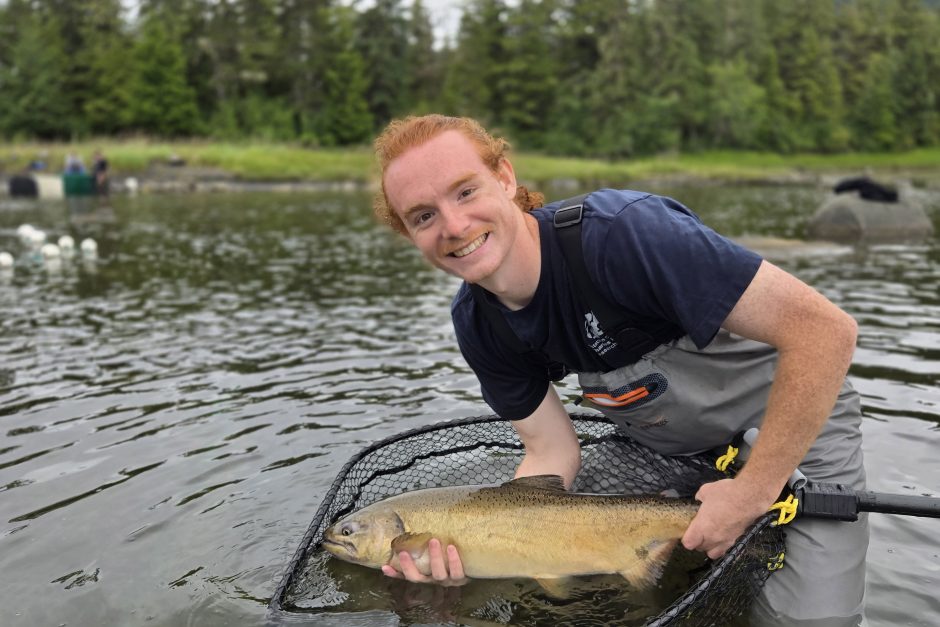
Junior Lewis Page immersed himself in fisheries and wildlife biology during his summer internship with the Alaska Department of Fish and Game.
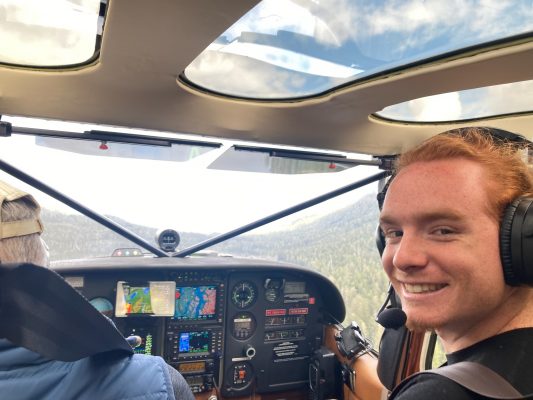
His adventures included snorkeling in chilly, snow-melt-fueled streams and taking samples of fish caught by anglers to monitor the population.
Looking back, the double major in ecology and evolutionary biology and Spanish scoured job boards and made several calls to people with Alaska Fish and Game and the U.S. Forest Service. Thanks to some experience snorkeling with the Missouri Department of Conservation, he was hired for the internship and rushed to Alaska. He was in Alaska before the school year ended, from April 27 until mid-August.
He set up shop in Petersburg, a small town on a remote island in southeast Alaska, which is about 2,600 air miles from his hometown in Missouri.
He primarily worked on two main projects.
Project 1: Steelhead Monitoring
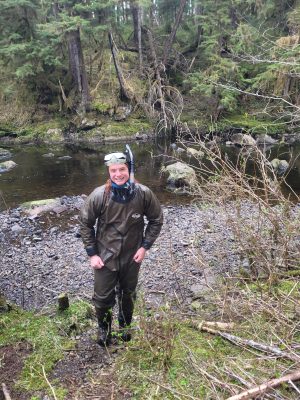
Steelhead, a type of trout, swims upstream to breed and make their annual migration, or run, in the late spring.
“Snorkeling is one of the least intrusive, yet inexpensive and highly effective ways to monitor these streams,” Page said. “In this area, a team of two snorkelers is flown into an alpine lake on the upper reaches of each system. We then snorkel downstream, each watching one side, and tallying fish as we go. After several hours, when we reach the end of the snorkeling section, we walk to areas where we can be picked up by jet boat or float plane.”
The team snorkeled down the streams and monitored the population three times to get an early, peak, and late count of the fish during their migration period. This practice allows the wildlife team to gauge the run and the stability of the population. Several streams are surveyed each year.
Project 2: Marine Harvest Survey Program
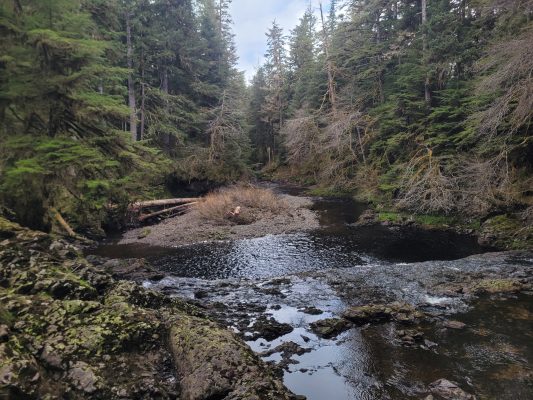
The Marine Harvest Survey Program is a creel survey or a saltwater sampling survey where anglers are asked questions about what they caught and released following their fishing expeditions in Alaska.
“Petersburg has a large Pacific halibut fishery, but we also see flounder, cod, sablefish, rockfish, and all five species of Pacific salmon, as well as many other less common or less desirable fish,” he said. “For most of these species, we measure them or just note that they were kept. However, for Chinook Salmon, the primary focus for the Petersburg management area, we have a much more lengthy process.”
Lewis said the wildlife team would measure the fish in millimeters and inches and collect a fin clipping.
“This allows our lab to look at the fish’s genetic information and determine what population it is from. We also collect five scale samples. These can determine the fish’s age as they grow in rings, similar to trees.”
Page said it wasn’t the easiest task to ask people to take the time to answer his questions, but the information adds up and provides important details about the health of the fish population to inform management strategies.
The future
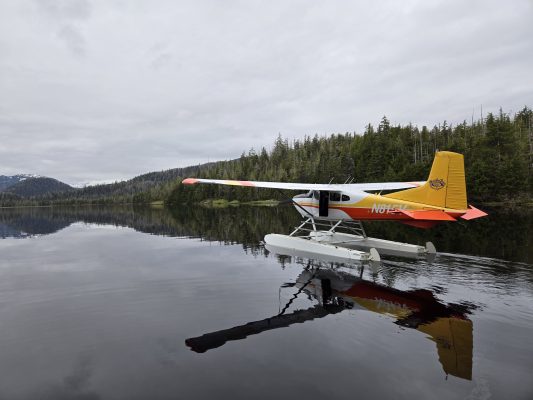
Lewis says this is just the start for him. He hopes to continue working in fisheries and wildlife biology–potentially even in Alaska.
“This helps me get experience and make good connections, but particularly helps me learn hard skills, like working with tracking tags, collecting genetics samples, and collecting scales,” he said.
He learned a lot and loved the adventures he experienced in the Alaskan wilderness.
“I really enjoy the snorkeling trips–taking float planes, hiking in super remote areas, snorkeling and seeing massive steelhead, and seeing wildlife like porcupines, Sitka black-tailed deer, and black bears.”

